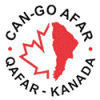The north-eastern lowlands of Ethiopia forms the homeland of the Afar People.
Who are the Afar People?
 The north-eastern lowlands of Ethiopia forms the homeland of the Afar People, a linguistically, culturally homogeneous nationality that also inhabits adjoining land on the northern border in Eritrea to the Red Sea and in Djibouti to the east. The region within Ethiopia is described by the National Geographic as the hottest, inhabited place on Earth being formed of ancient and more recent volcanic activity and being of semi-desert to desert landscape. The Afar triangle is also the home of Lucy, the oldest skeletal remains yet discovered (3.2 million years old). It is the cradle of humanity.
The north-eastern lowlands of Ethiopia forms the homeland of the Afar People, a linguistically, culturally homogeneous nationality that also inhabits adjoining land on the northern border in Eritrea to the Red Sea and in Djibouti to the east. The region within Ethiopia is described by the National Geographic as the hottest, inhabited place on Earth being formed of ancient and more recent volcanic activity and being of semi-desert to desert landscape. The Afar triangle is also the home of Lucy, the oldest skeletal remains yet discovered (3.2 million years old). It is the cradle of humanity.
Since the Region gained its own regional identity with the change of government in 1991, development in Ethiopia and world terms is only beginning. The 1.4 million inhabitants continue to have the lowest education and health parameters in Ethiopia. They live a very meagre lifestyle that in the past 6 years has been constantly made all the more vulnerable by drought. 93% of all Afar live as pastoralists. Of these, 5% live as agro-pastoralists dependant on herding goats, camels, cattle and sheep where pasture permits. Again, around 20% of the herdsmen live in somewhat fixed villages (mattaro) while the remainder live a transhumant existence moving up to 6 times annually in search of water and grazing. The fact that the majority are nomadic has been a deterrent to development: clinics and schools in the past have had minimal purpose for these people.
Challenges include: illiteracy, lack of education, poverty, homelessness, lack of fresh and clean water, disease (HIV/AIDS and others), food shortages and malnourishment, gender issues (female genital mutilation, lack of access for girls to education, and more), refugee camps requiring resettlement, political instability, and neglect.
Being such a dry environment, water is the crucial need. The under-ground water table is very deep and many depend on what little surface water they can collect. This then is highly unsanitary and therefore diarrhea is among the top three morbidities for the region.
Identifying and effectively addressing barriers to improved access, quality and equity in primary education is another challenge that both the Afar people and the donor community are facing: nearly 90 per cent of school-aged children are not in school. Children play a critical role in the nomadic lifestyle. Boys as young as eight start to herd their family’s sheep and goats while girls help with household chores. The alternative basic (primary) education provides flexible hours, allowing pastoral children time both to attend school and to help with family chores.
Quick facts
- The Afar people live in the triangulation of Eritrea, Djibouti and Ethiopia (the Horn of Africa)
- The poorest among Afar people live in the desert, known as the Danakil Depression, which consists of a vast plain of salt pans and active volcanoes. Much of it lies 200 feet below sea level and has daily temperatures as high as 125 degrees F.
- Population is estimated to be 3 to 5 million
- Landmass 250,000 sq/km, including 1,000kms coastline of the Red Sea
- Life expectancy 45 years.
- 94 % illiterate
- 90 % nomadic
- Religion: Islam
- Afars in Canada: 1,000 (estimated)
